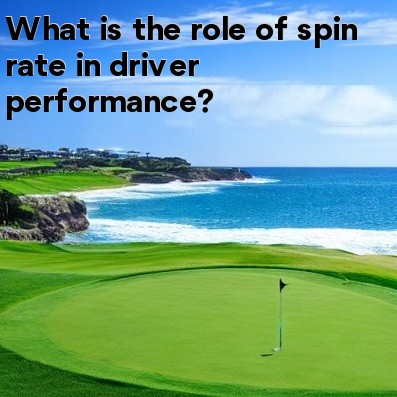
The Role of Spin Rate in Driver Performance in Golf
Golf is a sport that requires precision and skill, and one key factor that can greatly impact a player's performance is the spin rate of their driver. The spin rate refers to the number of times the golf ball rotates per minute after being struck by the driver. Understanding the role of spin rate in driver performance is crucial in maximizing distance and accuracy on the golf course.
Distance and Carry
Spin rate plays a significant role in determining the distance a golf ball travels off the tee. If a player has a high spin rate, the ball will tend to climb into the air and generate more backspin, resulting in increased lift. This may sound beneficial, but too much backspin can hinder the ball's distance potential by creating more drag and causing it to fall back to the ground sooner. On the other hand, a lower spin rate produces a flatter trajectory, allowing the ball to roll more once it lands, resulting in longer carry distances. Golfers who can achieve an optimal spin rate can maximize their driving distance and potentially gain a competitive edge.
Accuracy and Control
Aside from distance, spin rate also affects the accuracy and control a player has over their shots. A higher spin rate can add stability to the ball's flight, helping it stay on a desired path and reducing the effects of side winds. This can be particularly advantageous when trying to hit a fairway or land a ball on a specific spot on the green. However, it's important to note that too much spin can make the ball more susceptible to side spins, causing it to veer off course unexpectedly. A lower spin rate, on the other hand, can provide more control and accuracy for golfers who have a tendency to slice or hook the ball. With less spin, the ball is less likely to curve dramatically, allowing players to predict and shape their shots more effectively.
Optimizing Spin Rate
To optimize spin rate, golfers need to find the right balance for their unique swing and equipment. Various factors can influence spin rate, including clubhead speed, launch angle, ball construction, and the club's center of gravity. To achieve the optimal spin rate, golfers may need to experiment with different combinations of equipment and technique.
- Club Selection: Different driver models and brands can produce varying spin rates. Golfers should try out different clubs to find the one that suits their swing and produces the desired spin rate.
- Launch Angle: Adjusting the launch angle can impact spin rate. A higher launch angle tends to increase spin, while a lower launch angle reduces it. Golfers can work with a professional instructor or utilize launch monitors to determine the optimal launch angle for their swing.
- Ball Selection: Golf balls are designed to offer different spin characteristics. Golfers can experiment with different ball brands and models to find the one that provides their desired spin rate and performance.
In conclusion, spin rate is a crucial factor in driver performance in golf. It directly affects distance, accuracy, and control. Golfers who can optimize their spin rate can achieve longer carries, increased accuracy, and better shot shaping capabilities, ultimately improving their overall performance on the course.




